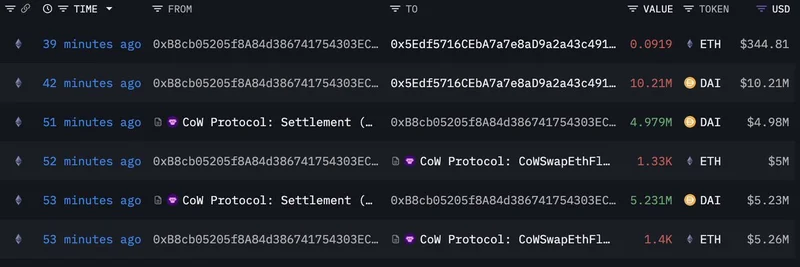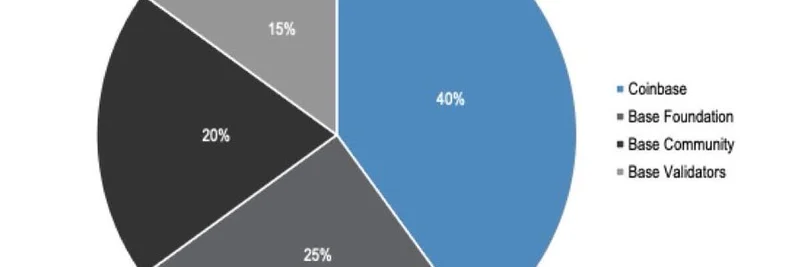In the unpredictable realm of cryptocurrency, no one is safe from market jitters—not even hackers. A recent tweet from Lookonchain highlights a fascinating case where two wallets, believed to be tied to hackers, offloaded a whopping 5,480 ETH worth about $20.47 million. They bought this ETH just a week earlier at an average price of $3,735 per token, only to sell during a market crash, swallowing a $3.7 million loss. This story not only underscores the brutality of crypto volatility but also offers valuable insights for meme token enthusiasts navigating the blockchain landscape.
Breaking Down the On-Chain Activity
Lookonchain, a popular on-chain analytics account, spotted this activity through transaction monitoring. The wallets in question are 0xB8cb05205f8A84d386741754303EC5bD23F1618e and 0x81c0bAa3DA99827D713b0c6C41176EDf96AD0304, as tracked on Arkham Intelligence. From the data, these addresses executed several swaps and transfers involving ETH and stablecoins like DAI via protocols such as CoW Protocol, which is a decentralized exchange aggregator designed to minimize slippage and front-running.
For those new to the terms: "On-chain" refers to transactions recorded directly on the blockchain, making them publicly verifiable. "Panic-selling" is when investors sell assets hastily due to fear of further price drops, often leading to losses. In this case, the hackers' quick dump suggests they were spooked by the broader market downturn, possibly triggered by macroeconomic factors or crypto-specific events.
The transactions show inflows and outflows in quick succession, with significant ETH amounts moving to settlement contracts. For instance, one wallet transferred over 2.7K ETH valued at $10.27 million, while others involved smaller but still substantial sums. This kind of behavior is typical in liquidation scenarios or when holders want to exit positions fast.
Why Label Them as Hacker Wallets?
Lookonchain describes these as "likely linked to hackers," based on their transaction history and patterns observed in past exploits. In the crypto world, hacker wallets often accumulate funds from security breaches, like draining decentralized finance (DeFi) protocols or phishing scams. While specific exploits tied to these addresses aren't detailed in the tweet, on-chain sleuths like Lookonchain use tools to trace fund origins. If you've followed crypto news, you'll know that hackers sometimes launder stolen funds through mixers or hold them in ETH before cashing out. This sell-off could indicate an attempt to liquidate before prices drop further or to cover tracks amid increased scrutiny.
Implications for the Meme Token Ecosystem
At Meme Insider, we're all about meme tokens—those fun, community-driven coins like Dogecoin or newer ones on Ethereum and Solana. But why does an ETH dump matter here? Ethereum is the backbone for many meme tokens via ERC-20 standards, meaning ETH's price directly influences gas fees (transaction costs) and overall market sentiment.
When ETH crashes, as it did recently (dropping over 13% in a day based on the tweet's context), meme token projects can suffer. Lower ETH prices might make gas cheaper, encouraging more trading, but they also signal bearish trends that scare off retail investors. Hackers dumping ETH adds another layer: it floods the market with supply, potentially exacerbating the dip. For meme token traders, this is a reminder to watch on-chain signals—tools like Arkham Intelligence or Etherscan can help spot whale movements (large holders) that might precede price swings.
Moreover, this event highlights blockchain security. Meme tokens, often launched with minimal audits, are prime targets for hacks. If even hackers are getting rekt (crypto slang for wrecked, meaning big losses), it shows that timing the market is tough for everyone. Use this as a cue to diversify, set stop-losses, and stay informed via reliable sources.
Key Lessons for Blockchain Practitioners
Volatility is Universal: Crypto markets don't discriminate—hackers, whales, or retail folks can all take hits. Always have an exit strategy.
On-Chain Tools are Essential: Platforms like Lookonchain provide real-time insights. For meme token hunters, monitoring wallets can reveal pumps or dumps early.
Learn from Losses: The $3.7 million hit here is a stark example of buying high and selling low. In meme trading, where hype drives prices, patience (or "diamond hands" in community lingo) can pay off, but so can quick cuts to minimize damage.
Security First: If you're building or investing in meme tokens, prioritize smart contract audits to avoid becoming the next hack victim.
As the crypto space evolves, stories like this keep us grounded. Stay tuned to Meme Insider for more updates on how major events ripple through the meme token world. What's your take on this ETH dump—buying opportunity or red flag? Drop your thoughts below!


